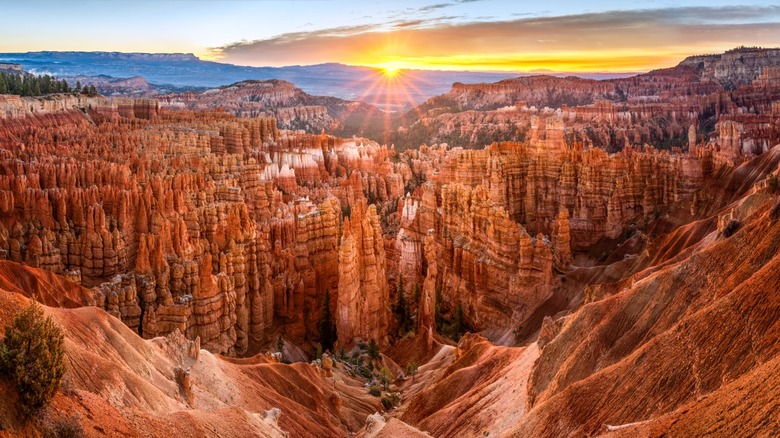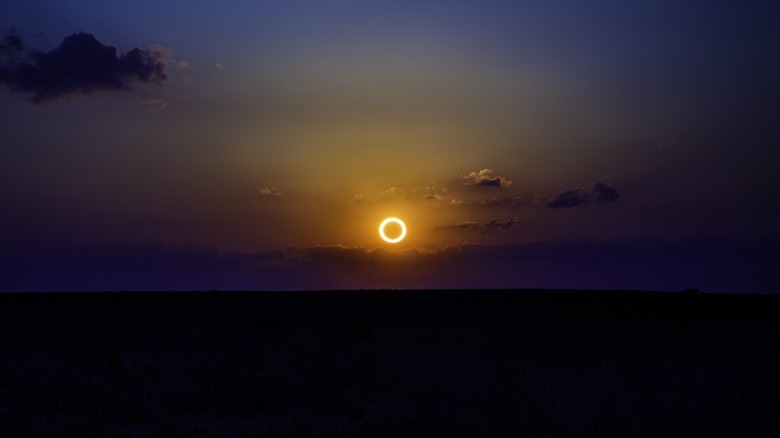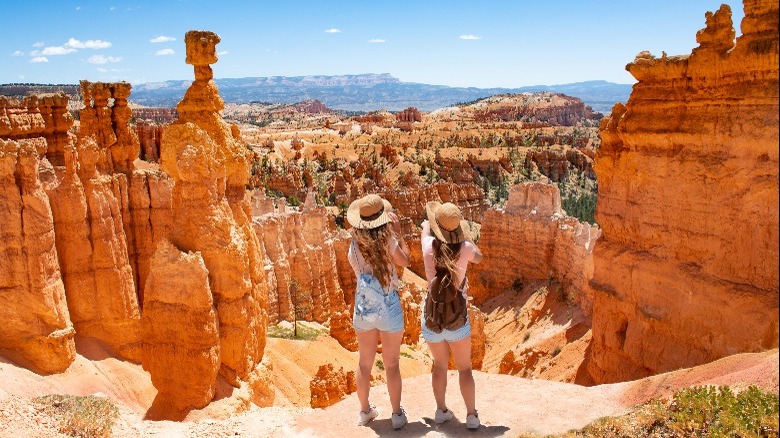This National Park Offers Some Of The Best Solar Eclipse Views In The Southwest
With one of the most important astronomical events of the year taking place this Saturday (14 October) — an annular "ring of fire" solar eclipse — it's fair to say that excitement is running high. Not only will this be a landmark occasion in the stargazing calendar, viewable across a significant swathe of America, but the weekend timing means that many people will be able to make the most of it by traveling to a special spot. So, where best to witness this memorable event? West Coast residents should consider watching the eclipse at Crater Lake National Park, but Southwesterners will find the most breathtaking backdrops and best visibility at Bryce Canyon National Park in Utah.
Located on the eastern edge of the Paunsaugunt Plateau, this iconic landscape is renowned for its unique geology. Featuring extraordinary rock formations, these range from sunset-colored spires and craggy crevices to its hallowed "hoodoos". Literally meaning "to bewitch", the latter are surreally-shaped, slender shafts of rock, caused by a specific process of erosion — and nowhere on earth are they more prevalent than in Bryce Canyon National Park.
So, with our attention now on the imminent annular eclipse, it's hard to think of a more atmospheric setting for this celestial spectacle. Furthermore, the wider area also boasts some of the world's best air quality and around 200 miles of visibility. So, weather permitting, it should be a clear vista. Before we get into our recommended viewing spots, however, what exactly is an annular solar eclipse — and why does it matter?
What's so special about an annular eclipse?
While any solar eclipse is cause for excitement, an annular eclipse is a far rarer event that creates the mesmerizing effect of a "ring of fire". In short, the phenomenon occurs when the Moon passes directly in front of the Sun, leaving just the outer edge visible. However, it only works when the Moon is far enough away not to block out all of the Sun. Put it this way, there hasn't been an annular eclipse in the U.S. since 2012, so it's worth thinking about where to watch the display.
Back at the Bryce Canyon National Park, there are any number of spots that could make a good viewpoint. However, it would be hard to beat the spectacular surroundings of the Bryce Amphitheater, where the greatest concentration of hoodoos can be found. There are also four lookout points here: Bryce, Inspiration, Sunrise, and Sunset, all providing an amazing view. If everything goes well, the eclipse will be visible here at 10:27 a.m., above the southeast horizon and lasting for two minutes and 30 seconds.
Of course, you'll need to keep an eye on the weather, as any cloud cover could obscure things. At this time of year, the park can fall below freezing at night and even snowstorms are not unusual. On the plus side, the area has only been cloudy on this date 23% of the time since 2000, according to TimeandDate, so fingers crossed. Just be sure to wrap up warm and go prepared.
How to make the most of the experience
While no reservation is required to enter the Bryce Canyon National Park, there is an entrance fee of $20 per person or $35 for a private vehicle. Alternatively, you may wish to invest in an annual U.S. Park Pass, which gives access to other national parks for $80. Last but not least, be sure to remember those all-important solar-eclipse glasses, as looking at the Sun without them can damage your eyes.
While the eclipse itself will only last a fleeting few minutes, the good news is that there is plenty more to see a the park. Spanning some 35,835 acres, in addition to the dramatic rock formations, the wider park takes in forests, meadows, and plenty of wildlife, with miles of beautiful hiking trails for exploring. Furthermore, Bryce Canyon is a designated International Dark Sky Park, meaning that it's an exceptional place for a nocturnal environment and one of the best places to stargaze in the world.
Finally, for those of us not able to see the annular eclipse in person, it's worth noting that it can be watched online. For instance, NASA will be broadcasting the event on its YouTube channel. But for those who are lucky enough to be able to witness it with their own eyes (or at least through solar-eclipse glasses), there are few settings more enchanting than Bryce Canyon National Park.


